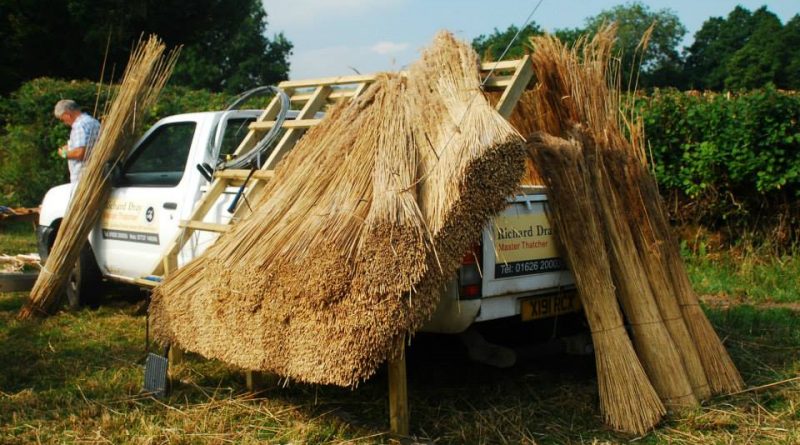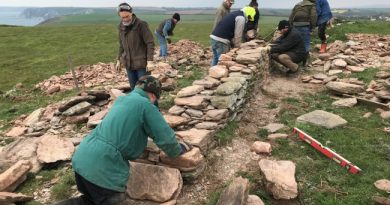Thatching Demonstration by: The Drays of Lustleigh
See how thatching happens from local boy, and latest in a generational line of thatcher’s, Richard Dray shows you how it’s done. He’ll be setting up test thatch all through the day, and you can ask him any questions you might have.
About Richard…
Richard Dray was just three years old when he first clambered on to a thatched roof. By the age of five he was a regular up on the scaffolding alongside father Mick. At 16 he left school and went into the family business.
Thatching is a family tradition, back to Richard’s great great grandfather, as long a pedigree as any and enough to earn them the respect of thatchers across the country.
Father, Mick, was president of the National Society of Master Thatchers and one of those who drew up the present NVQ scheme for thatching. The cup now awarded to the best apprentice nationally is named after him.
A family tradition…
“Father-son relationships are difficult especially in the workplace but he was a good man with a strong work ethic which has set me up well for my career.”
“He was a loon and we had some fun. But I wish he could have been a bit more relaxed and we could have packed up early and gone fishing sometimes.”
“Dad used to be a very disciplined man – 49 weeks a year we worked. I don’t think we had a lot of holidays.”
Richard is married to Sarah. They have a daughter Emelia, and a son George Richard, named after his great-grandfather. Richard will be 58 when his son turns 16, and he says: “I’ll be nearing the end of my career. It’s no place for an older gentleman. If George is keen and passionate, I’ll be happy to teach him. It’s a tough life up there. I have had to sweep snow off the roof before I could do any work.
Never a standard day…
Removing and replacing the top layer of old thatch can throw up a few surprises. Richard once found a dead cat, and has found a number of old leather boots.
Mick found a wedding ring lost by the previous thatcher, some 20 years earlier.
The job is much safer now than it was, but there are still dangers. Ten days after his daughter was born, and feeling sleep-deprived, Richard went up a ladder to do a quick repair around the chimney of a house in Manaton.
“It was a foggy day, and a steep, mossy roof. My hand slipped off the ladder and I feel 36 feet. I landed on my feet, and the footprints went six inches into the mud.
“The lady of the house, a retired GP, came running out. I said, ‘Don’t worry, I’m OK. Make me a cup of tea and I’ll be fine’, and I tried to sit up. She was screaming at me to lie down.
“They took me to hospital. I had no broken bones, but I have a compacted disc in my back.”
“I was shocked at how fast you go; how quickly you accelerate.”
Thatching tradition
Devon thatchers use two types of raw material: locally combed wheat straw and the hardier – but harder to work with – water reed, grown in brackish water.
In the past thatchers sourced their own raw materials. Every year the Drays would buy a standing crop of wheat and harvest it, creating stook upon stook of stacked wheat straw.
“They were 12 or 14-hour days,” Richard Dray says. “Dad used to place a barrel of cider in the field, and we stooked in toward it. When you got to it, you could have a drink, and then he would move the barrel to a new spot.
“When I was nine I thought it would be a bit of fun to try a glass. Dad had to let me sleep it off on the back of a trailer.”
The Drays have a trademark piece which they place on the roof when they’ve finished.
“Dad always use to joke that it’s to stop evil spirits being able to climb down.”




